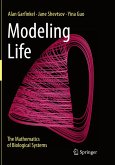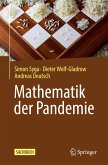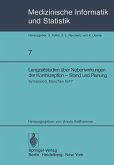This monograph considers the mathematical modeling of cellular adhesion, a key interaction force in cell biology. While deeply grounded in the biological application of cell adhesion and tissue formation, this monograph focuses on the mathematical analysis of non-local adhesion models. The novel aspect is the non-local term (an integral operator), which accounts for forces generated by long ranged cell interactions. The analysis of non-local models has started only recently, and it has become a vibrant area of applied mathematics. This monograph contributes a systematic analysis of steady states and their bifurcation structure, combining global bifurcation results pioneered by Rabinowitz, equivariant bifurcation theory, and the symmetries of the non-local term. These methods allow readers to analyze and understand cell adhesion on a deep level.
"Modelers who wish to use similar approaches in their modeling will find this a good source of base information, as well as a valuable guide for initiating similar analyses for their own models. Analysts wishing to expand our understanding ... will find this book a fine building block. It could also prove a useful resource for graduate students looking for potential projects ... . this monograph is an admirable attempt ... and hopefully will inspire significant further study." (Kevin Painter, SIAM Review, Vol. 64 (1), March, 2022)
"The detailed analysis, as presented here, shows a stimulating interaction between model symmetries, mathematical analysis, and biological reality, which probably are inspired the authors and hopefully the readers of this book too." (Andrey Zahariev, zbMATH 1473.92001, 2021)
"The detailed analysis, as presented here, shows a stimulating interaction between model symmetries, mathematical analysis, and biological reality, which probably are inspired the authors and hopefully the readers of this book too." (Andrey Zahariev, zbMATH 1473.92001, 2021)









